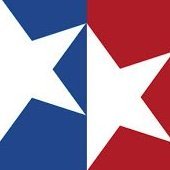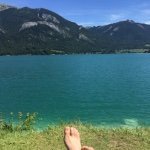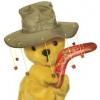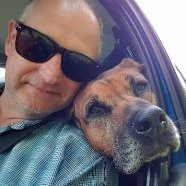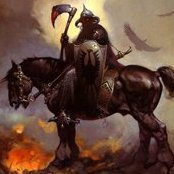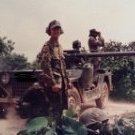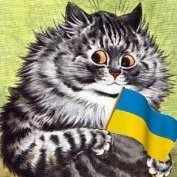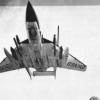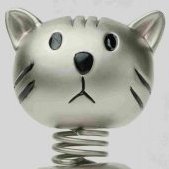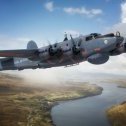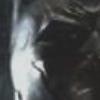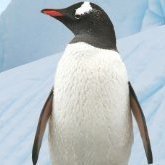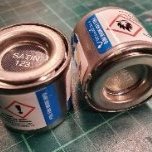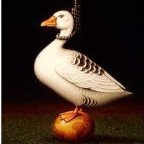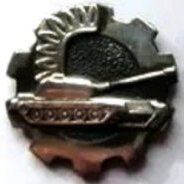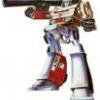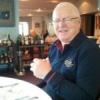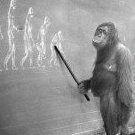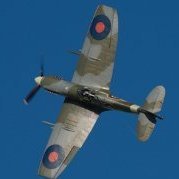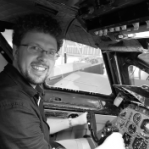Leaderboard
Popular Content
Showing content with the highest reputation on 15/12/22 in all areas
-
Here is one of my latest build, JetMads Viggen in 1/32. The printed resin is roughly printed on many parts, but the landinggears and the fan blades, which on a normal model consist of many parts, are here only one part. In conclusion, it is a well detailed shortserie model that takes its time to build. A Viggen in 1/32 scale makes an impressive model, it is 51 cm long with a span of 33 cm. The resin makes it unusually heavy for a model at 0.7 kilos. Anders E32 points
-
For the penultimate build, and my last white and orange kit, of the year, here is my Sword 1/72 Douglas F3D-2T2 aka TF-10B Skyknight. The TF-10B was used to train night fighter pilots and F-4 back seaters. As usual with limited run kits, and my previous EF-10B build, this one suffered from poor fit, and vague instructions. A good example of both is the engine nacelles and intakes. The vague instruction caused me to place the intake a little too far back on the EF-10B* build and the fit of the nacelles was awful. I think I got the placement right this time. In addition to the basic kit I used the seats, stick and control panels from the Pavla interior. For decals I used the F3D-2T2 decals from the Matchbox F3D-2 kit. I was worried about using these given their age and thickness, but they worked very well and responded well to Solvaset. Their one negative was that they were coated with a milky white adhesive that left white blotches after it dried. This required the kit to be thoroughly washed to remove them. This in turn let to water seeping into the interior where it immediately made its way to the cockpit and fogged the windows. With the use of a hair dryer I was able to clear it for the pictures, but as soon as the heat was removed they started to fog again and you can see it in the first, forth, and sixth pictures. Eventually it will evaporate out. Because of the issue I had with my last build of the orange showing through the white of the national markings this time I used Fantasy Printshop marking and their white backer decals for them. This solved the problem. I used AK Real colors for the white, black and orange, and Alclad for the wing leading edges and engine exhausts, Next up will be the Testors/Italeri YF-12A. Enjoy * To clarify the vague instruction issue this is the instruction step for installing the engine intake and nacelle is: Given the arrow I interpreted this as meaning that the intake, part 22 should be glued to the fuselage and then the nacelle placed over it. There is even a ledge on the fuselage that looks like where the intake should go. If you do that the intake will be too far back in the nacelle: Instead the intake should be glued to the front of the nacelle before the nacelle is attached to the fuselge, in which case you get this: Which is correct. Maybe I should have realized this before it was too late on the EF-10B, but clearer instructions would have helped.22 points
-
Finished at last! This one has been sitting on the shelf of doom for ages because I could not bring myself to face trying to assemble the Firestreak missiles. The boosters each have 4 fins, the missile has 4 wings and the rear of the missile has 4 miniscule fins. All made from photo-etch that has to be attached using CA. Not a job for the faint-hearted but I finally got around to it. For those interested or facing the same problem the fins have a small spigot which fits into locating holes in the bodies. These holes are somewhat rudimentary so need to be opened out with a drill. Using tweezers to pick up the fin the spigot was then dipped in CA gel and then put into its assigned hole. Once firmly in position some liquid CA was run along the junction of the fin and the body. Put like that it sounds easy but you have to get the fin in position and correctly lined up before the glue sets which is not easy as handling the missile is awkward and there is always the possibilty of dislodging any of the previously attached fins. Not that the a/c itself was without problems, mainly self induced. The Alleycat conversion consisted of a new nose and wingtip extensions which fitted fairly well. The problems started with the finish. Removing the masking after the final coat also removed some of the paint (acrylic) and trying to make it good only made things worse so a complete strip down was required and in the process the canopy was ruined. Fortunately I had another Swift in the stash so I was able to use the canopy from that. It was repainted successfully using enamels. F7 side As usual, any comments, questions or criticism welcome John21 points
-
Hi, probably the last two of the year. First is the Mikro Mir DH108 Swallow in 1/72. Nice little kit that needs bit of sanding and not much filler. Decals are from the kit and the only changes were to the two probes on the wingtip replace with metal ones and using parts from the Special Hobby Vampire kit for the undercarriage. HSS finish was from Vallejo Metal Color Aluminium. Next is from the Cyber Hobby, their Gloster Meteor F.3 finished in the markings of 500 Sqdn County of Kent based at RAF West Malling. Not many changes to the kit only the decals. According to the RAF Post War bible `Cold War Sheild' from Roger Lindsay their codes were red not black. Once again a nice kit and I am planning on doing more Meteors when they were based at RAF West Malling called `(RAF West) Malling Meteors'. This was also painted with Vallejo Metal Color Aluminium. Thanks for looking. Regards and Merry Christmas Robert18 points
-
This is the Zvezda MiG-21bis, with Kuivalainen etched details, Eduard canopy masks, a Master pitot probe, Armory wheels, and Balkan Models Croatian MiG-21 decals. The Kuivalainen details (produced by Eduard) were great and made a significant and rapid improvement to the cockpit. According to the Balkan Models instruction sheet, Number 102 “Avenger of Dubrovnik” is the ex-Yugoslav Air Force number 17235, in which Capt Ivica Ivandic defected from Uzice to Split on 15 May 1992. After a struggle building a kopro MiG-21UM, the Zvezda bis was a really nice kit and a treat to build.18 points
-
The WIP for this can be found here: https://www.britmodeller.com/forums/index.php?/topic/235079661-south-lebanon-army-m50-apc-revised-title/ An M50 Sherman converted to an APC by the SLA. I believe there were several of these: 4 perhaps, and apparently all different. There was at least one based on an M4A4 hull, and this is the one I chose, largely because I'd taken the turret from a Dragon M50 for something else.18 points
-
Hi everyone Been praying for years that someone would release a `48th Beaufort and now they have, I thought I`d better show you my attempt at one So here it is, my go at ICM`s 1/48 Beaufort Mk I, Finished in markings of 16 Sq SAAF based in Madagascar `42, which loosely fits in to my CBI theme, as they were stationed there to patrol.... ....the Indian Ocean to watch out for Japanese attempting to land there. ( So I read ) Built OOB with a only a few additions: seat belts for the pilots seat and some detailing on the cockpit walls, as the kit only provides..... Instrument panel and centre console, made from chopped up PE from the stash and bits of wire. Also had a go at posing the Direction Finder antenna deployed which I improvised with a square thing I found in the stash and wire. Decals from Xtradecal`s Beaufort set X48219 Hope you enjoy the pic`s, thanks for looking Cheers Russ18 points
-
This 1/72 Revell F-89D/J Scorpion was entered in the FB NordicPower Group Build. F-89D FV-237 belonged to the 57th FG "Black Knights" stationed at Keflavik, Iceland 1962 Thanks for watching! Cheers, Luka17 points
-
The work I produced this time is a T-80A Revell product and I finished it with a small Vignette. Any opinion is fine, so please give us a lot of opinions. Thank you.16 points
-
2022 was proceeding readily on the modelling front until the latter half of the year. We had our house on the market and sold quicker than expected, so the bench had to get packed up Still managed 5 though, so not too shabby, as that seems to be my average output. In order of completion Eduard's superb 1/48 Spitfire Mk1. A very enjoyable kit, this one finished using Fundekls "Early Spitfires part2" I have bought several more! Next was Accurate Miniature's 1/48 now rather old B-25C/D . This was not as fun as the Spitfire . Nor was not it as good a kit as I seem to remember from when I first built it upon its initial release Decals from Eaglecals Continuing on with kits-that-arent-fun-but-need-to-be-built Fly Models 1/32 Hurricane MkIId I needed a bit of a quick easy build after that. The Hasegawa 1/48 Ki-44 Tojo fir the bill although it took me 2 goes to get the camouflage right Meng's 1/48 F-18E was another enjoyable build, although I raced it to the finish line as we were starting to pack up the house Once Xmas is done with, time will be spent getting a new bench up and running so full production can be resumed. as Im transitioning to retirement now, Im expecting that production to be fruitful Enjoy the season fellow Britmodellers Bruce16 points
-
Hi All, Well it's been a busy 2022! My first completion for the year was Special Hobby's 1:48 Blackburn Skua, completed as an aircraft from 803 Sqn FAA flying from HMS Ark Royal in July 1940: Here's the RFI: Next up was Italeri's 1:72 Short Stirling Mk.I, completed as BF372 of 149 Sqn RAF, based at RAF Mildenhall in 1942. This aircraft was flown by an Australian pilot, RAAF Flt Sgt (later P/O) Rawden 'Ron' Middleton VC. On 28th November 1942 his aircraft was badly damaged on a raid to the Fiat aircraft works at Turin. Despite suffering multiple grievous injuries, including the loss of his right eye, Middleton managed to complete a 4 hour flight to bring the stricken aircraft back to the English coast. Five of his seven crew then baled out (the front gunner and flight engineer remained aboard to try and persuade Middleton to carry out a forced landing). Following his refusal to do so, the remaining crew baled out but did not survive the night in the English Channel. Middleton stayed with the aircraft, which ditched into the Channel, his body not washing ashore until February 1943. Middleton was posthumously awarded the Victoria Cross and promoted to Pilot Officer. An extraordinary story of courage. RFI here: Next up, a brace of Malta Spits from the 1:48 Tamiya kits: Next the mighty Short Sunderland Mk.III, from the 1:72 Special Hobby kit. This was modelled as EJ134 'N-Nuts' of 461 Sqn RAAF, based at RAF Pembroke Dock, Wales, 1943. The Sunderland was known as The Flying Porcupine for its extensive defensive armament and ability to fight off enemy aircraft. 'N-Nuts' very much lived up to this name on 2nd June 1943, whilst on patrol over the Bay of Biscay she was attacked by no less than 8 Ju88s of KG40. During this protracted engagement the crew of EJ134 destroyed 3 of the Ju88s, severely damaging another 2. EJ134 also sustained significant damage as well as several of the crew being severely injured, and Sgt E C B Miles sadly succumbing to his mortal wounds. However, the crew nursed the damaged aircraft back to the Cornish coast without incident and eventually beached the aircraft on Praa Sands. RFI: Staying in gentleman's scale was Special Hobby's Douglas Boston Mk.III, completed as AL468, an aircraft of 418 'City of Edmonton' Sqn RCAF, based at RAF Bradwell Bay, Essex in 1942: RFI: Jumping up a couple of scales ICM's lovely Gloster Gladiator Mk.I, completed as KW-T, an aircraft of 615 (County of Surrey) Sqn RAF, based at St Inglevert, France in April 1940: RFI: Next up Airfix' lovely Spitfire Mk.XIVe, completed as SM888 of 28 Sqn RAF, which was part of SEAC in India in July 1945. This was my contribution to an informal group build with @mark.au, @bigbadbadge, @AdrianMF, @Winded Penguin and @Biggles87, which was great fun! RFI: Next an actual group build ('The Fork Tailed Devil STGB'), with Tamiya's superb P38F/G, finished as an F-4-1 aircraft of No.1 PRU RAAF in 1943: RFI: Staying in 1:48 another superb kit, Airfix' Bristol Blenheim Mk.I, built as L6670 of 211 Sqn RAF, based at Menidi, Greece in 1941: RFI: Back to 1:72 we have Airfix' Fairey Swordfish Mk.I, modelled as L4F of 815 Sqn FAA, which flew from HMS Illustrious and was part of the attack on the Italian fleet at Taranto by Swordfish from 815 and 819 Sqn FAA on November 11/12th 1940: RFI: Next another Airfix 1:72 kit, with their lovely Bristol Beaufort Mk.I, finished as L9866 of 217 Sqn, based at St Eval in Cornwall in Feb 1941. This aircraft was flown by Sgt John Rutherford (pilot), Sgt Thomas O'Byrne (navigator), Sgt William Browning (W/Op), and Sgt John Wood (AG). The crew were all lost in the 1st Feb attack on the German cruiser Admiral Hipper whilst she was moored in Brest Harbour - the aircraft was thought to have been shot down by a Bf109-E4 of II./JG77: RFI: The last completion for the year (or is it?!) is Tamiya's 1:48 De Havilland Mosquito FB Mk.VI, modelled as HR405 of 143 Sqn RAF, which was part of the Banff Strike wing in 1945: RFI: A late (Christmas Eve) addition is Eduard's 1:48 Grumman Wildcat F4F-3, finished as a Martlet Mk.III of 805 Sqn FAA, based in the Western Desert in 1942: Here's the RFI: It's been another 12 months I've really enjoyed being part of this wonderful community - so much learnt, banter engaged in, and enjoying some of the fabulous work which goes on here. Thanks to all those who have offered kind words and support along the way - it has been sincerely appreciated! All the best to you and yours, and let's hope that 2023 is another cracker for Britmodellers everywhere! All the best, Roger16 points
-
In a PM discussion with @2996 Victor he linked me to some fantastic photos of a PR Hurricane. I contacted the photographer, well, the photographers son who had posted them, and he was happy to have them posted here for discussion, as long as his dad got a credit. Looking at the other images, there were some fascinating ones, which had various questions, so with the permission on Brian Spurr, and thanks again to his father, Algy Spurr, I'll start a series of threads on them. On with the photos, and I think it would be good to show the photographer in the first photo "Photo taken of my dad Algy Spurr (probably with his camera, he was a photographer in the air force). Hawker Hurricane - No. 2 P.R.U. (Photographic Reconnaissance Unit) - DG622 - Pilot is Warrant Officer Carpenter with the PR guys, my father Algy Spurr at right." Note the bulge on the wing for a wing camera. I'll come back to this in a moment as I just spotted something.. "Photo taken of my dad Algy Spurr (probably with his camera, he was a photographer in the air force). Hawker Hurricane - No. 2 P.R.U. (Photographic Reconnaissance Unit) - DG622 - my dad underneath working on loading the camera. Sadly not clea enough to see if there are camera ports Some camouflage and markings points Probably one of the 'bosun blue' Hurricanes, with a lighter blue and red roundels. The fuselage roundel centre is perhaps the red remaining from overpainting the rest of a C1 type with a lighter blue. I'm going @JackG to perhaps do one of his very useful analysis of size and possible colour options here...please. Now, as noted in the link, DG622 was converted from a Mk.I, L1658. L1658 was a pretty old airframe. delivered 28-Sep-38, making it the 111 production Hurricane. served with sq 32/242/56/5 OTU/55OTU 10-Feb-41ConvertedTo mark II DG622, to Malta 1 Feb 1942 then with 69/2 PRU 30-Sep-43CAT E/SOC Now it not that hard to make a Mk.I into a Mk.II, new engine, new engine bearers, 3 cowl panels, a belly panel, new front wing fillets, new carb intake and radiator, and associated systems, and you would assume for an old fabric wing ..replacement metal wings.... ? Now here the bit that caught my eye when looking at the camera bulge, I have cropped the image and played with brightness and gamma.. Note behind the bulge the panel lines look straight, and there is a distinct line front to back of wing. Now L1658 is an early Hurricane, and built with fabric wings... now compare the panel lines, metal A wing have distinctive hexagon centres, fabric wing have all rectangles, and the fabric starts outboard of the gun bays. and I'm going to ask @JackG if he could be so kind to to perhaps have a look at the 3/4 shot 427013, and see where the landing light is. I just dug out a kit (PCM 1/32 as it was too hand) and by the highly scientific method of holding up in front of the image on the screen and aligning the root and tip light, the landing light looked to be a bay inboard. I'm not sure on this, but if this IS a fabric wing, then this is fascinating, implying that Mk.II conversions may have retained a fabric wing.... If it's not, then all please laugh.... Re the wing camera bulges, famous image of a IIB in India BM969 of S Flight No 3 PRU Again, while I have seen description of the fuselage camera fitted, I have seen no mention of wing mountings, but the Hurricane has a thick wing, which maybe worth a thread in itself. I've spent an age looking at pics and trying to find a same angle metal metal wing but I've had enough for now... @StevSmar @tango98 @Graham Boak @Geoffrey Sinclair @Dave Fleming and thanks again to Brian and Algy Spurr. PS I was going to post the Beuafighter PR images, and I find they are already here, and @Brian Spurr is a member.14 points
-
Very nice figure set I particularly like how the grey horse turned out14 points
-
Typical representative of the Nachtschlächter, training aircraft transformed for harassment actions on the eastern front, the Ar66 looks like a good and quite easy kit; I say 'looks like', because in reality the errors to be corrected in the kit are numerous and in part involve quite demanding work, starting from the cockpit and the engine area, then moving on to the wings, whose supports require fundamental modifications. In order not to use the decidedly ugly bombs in the kit, I tried my hand at self-construction of two AB36 containers, also replacing the equally ugly ETC50 bomb racks in the kit. The model I propose is an Ar66 C of 3/NSGr.2 (third Staffel of Nachtschlachtgruppe 2), which operated from Baranowicze (now Belarus) in the winter of 1943/44. The aircraft, which was originally probably in full RLM 02 with black undersurfaces, has been carefully camouflaged with the use of white colour, totally covering the lateral and upper areas previously in RLM 02. The undersides. Hope you like it. Thanks for your attention. Giampiero12 points
-
Good afternoon. Winter has its icy grip on my little town and there’s nothing better on a cold day than a spot of modelling. Especially when you’ve broken up for Christmas. 🤩🎄 Not a lot done at the tail end of last week. I went to watch the Cure with my daughter. 🕷️ Fantastic as always. And then the office party. I’ll refrain from photos on that evening due to wine file shenanigans . 🥸 Needless to say the start of this week has been a total relax with some quality bench time spent on the Mirage. let’s begin shall we? Grab a bevy it’s a long one. * @CedB😉 The, let’s say most challenging part of this build I think are the instructions. It took me a while to realise the alternative colours, even though you don’t get told what colour they should be for your chosen scheme but there is a clear choice. The alternative for cutting off those little struts is……. Erm not to. 🤪? Why? Who knows? There is no, “This” or “That” of good old Airfix or Even the big friendly question mark and arrowed picture of Revell fame. No no it’s “do, or do not” like a Jedi. 🤔 So here’s the alternative page. See those little bits 8a? Are they for alternative schemes? Which scheme has which? Do thou have both? “Help me Obi-wan you’re my only hope” 😂 So being a big fan of the dry fit I did this. Now those little pegs look like they should lock into holes maybe? But if I tuck it under to line it all up you get gaps, so it looks like it should just be like this. If so why is there an option to cut these off. ? It kind of looks like this. that looks wrong so in for a penny and all that I glue in 8a That looks better. (Or does it?) A few pages in I saw this from the PE fret. R and S So it looks like the odd peg and the sloping section are correct. Which made me question the little pip I’d glued on. so long story even longer I googled it ant it looks like if you have the pegs you don’t have the pips and vice Versa which in a round about way the instructions do say but not very clearly. Sooo off with the pips. That was time I’m never seeing again. 🥸😒. Hopefully dear modeller these notes will help you in your build if ever you do attempt to build this kit. Ever onward. 🚶♂️ The intakes had a few pin marks that got sanded. Things got tidied up and primed. While they dried I snipped off this beauty. It even comes with a little trolly and in its entirety is bigger than some of my 1/72 kits. The only problem is that if you choose to leave it out of the aircraft there is a big old chasm you can look into from the rear angle. Why they didn’t offer a trimmed down one to have in the airframe I know not but for me the only option is to add it to the jet. bye bye all that lovely detail. 😔 To be fair they have chosen some daft places for pin marks. Which I fixed even though you won’t see it. There’s quite a lot of detail inside as you can see. All ready for paint. (Sorry @hendie) page two and more pigment sloshing. Silver on ze intakes. The suspect looking intake pointy bits. The front wheel well parts. And the rear wells. This is where the detail really sines. 🤩🤩 I have a bunch more progress so I’m off for a coffee and I’ll post up in a sec. End of part one.10 points
-
After a break of 20 years, I re-started the hobby this year. This year was also the Singapore Airfix Cup restarted, so I ended building the Airfix Lynx to see where I stand in modeling. It was a trial and error journey since my modeling days 20 years ago. First try for AK acrylic paint, PE parts and the various techniques in modeling. I wasn’t disappointed in this modeling competition. Here’s some pictures of my completed model. What’s my prize? This.9 points
-
With a few mods to look like the prototype, not perfect of course, nothing I build ever will be. The nastiness between the upper and lower cowl is Miro Crystal Clear used to hold the cowl on for painting and not yet cut away (I detailed the engine as well) As usual, striving to mediocrity. Thanks for looking9 points
-
Hello, everybody! Starting with a new model(s)... well actually started with these a while ago, but due to a slow progress haven't yet published it here. The kit is ICM ANZAC Ford Model T 3in1 kit, of which I'm building two. I have a Microdesign PE sets for both of them, a GasPatch Models beautifully made Lewis gun set and one figure from D-Day Miniature Studio for now. There is a small diorama setting with those two vehicles and a few more figures in my mind. Here are all the goodies I have at hand. The mudguards and the frame are molded into one piece and have quite a few KO marks underneath that will not be visible really, but I filled these anyway. One thing I wanted to try is to make the front axle movable at least on one of the vehicles to make the setting more lively. It required some on-the-edge surgery, but turned out to be not as hard as one might expect, As both of the kits have double details for the axle and the steering parts it made it a lot easier to do. Underneath I added brake linkages and rods. Again - won't be much visible, but an the other hand, why not. To date I'm a bit more than on a halfway there with the engine compartment, that included some added wiring and replaced piping. Here is the thing with the details dry-fitted. And with another one that is disassembled. Cheers! Kristjan8 points
-
I have been working on the second SBAT model, TGB 40 from 'Swedish Model Works'. Yes, its a 1:87 scale, too darn small for my taste, yet interesting. This is the 3-axle brother to the TGB 30 from the same company, I did awhile back. I wanted to do something that will make the TGB 40 feel at home. Mud and more mud, was the theme of this little vignette. So I wanted to do it some justice. My apologies for my camera. I need to buy a new phone, although, reluctant, but my camera is not as effective as it was in the beginning. So please bear with me. I've taken both outdoors and indoors photos. Thanks for looking.8 points
-
Frogs 1/72 Nachtjager plus a few brass and resin extras from Eduard and Master The antennae aren't 100% aligned correct - cyanoacrylate glue gripped really fast, but I am gradually teasing the brass into shape - this last photo shows misallignment on the lower port rod still - baut I don't want to snap anything, gently easing will get it lined up, but I was itching to post what I have managed to tease out of this old pocket money kit from my childhood8 points
-
Airfix Grumman Avenger as AS.5 XB443/384/C of 814 Squadron, HMS Centaur c.1955. This is the Airfix kit with FreightDog decals. I scratchbuilt the large AS.5 radome and the stores rack under the port wing ( a big thanks to fatalbert for his help on that). The launch rails are the Airfix rockets minus fins and warheads and squared off. The arrestor hook is homemade and relocated. Airfix's representation of the exhausts is pathetic but I left them alone to keep this as OOB as I could. I got a few details wrong and mislaid one decal but I'm not telling you where. The whitewall tyres/tires were a pain to paint and are a bit rough but this aircraft actually was fitted with them! Thanks for looking. David8 points
-
So I was at Telford looking for a kit to buy to make for a 'FlashMod' session my club had organised for two weeks after Telford. Basically. we all meet up somewhere and we have six hours to complete the kit, therefore I was looking for a simple kit as my entry. I decided to get a Meng toon tank or an aircraft (I built a Sturm Tiger previously using Meng's toon Tiger and a conversion kit)and so I finally decided to get Meng's B24J Liberator and was inspired by a display of Assembly ships on a club display. I was going to pick a simple design but they were all B-24D's so in a mad moment I decided to make the Spotted A** Ape, shown below: I figured that, as there were not many parts to the kit I should be able to crack it in six hours....maybe. My original plan was to source some decals for the spots beforehand but, unfortunately, could not find any so went to Plan B, which was to get some small spot stickers to use as masks. This had to be amended as the only spots I could get were too big so I ended up punching out the centres with a hole punch! Well the day came and I made a great start priming everything and painting the unspotted parts. However I was trying to paint red , blue and yellow areas for the spots to be stuck on but it was taking ages as I would have to put three coats on to get the opacity. In the end I reverted to Plan C and re-primed, painted the base white and Olive Drab then stuck the spots on instead! I didn't manage to finish in the six hours and had to finish it off a few days later - I had to paint the vertical stabilisers, finish the mouth and eyes and make up some decals for the lettering, oh, and base it as well. It was quite a fun build although I get having to repaint some of the white areas to cover some mistakes. Here is the finished article. I tried matting down the dots but it didn't work. Thanks for looking Mick8 points
-
I thought I would start with the painting on the 1920 car. I have done the Caunter scheme on a few models now and depending on the vehicle it can be fairly straight forward or really awkward. The shape of the Rolls Royce makes it look like it would be one of the easier ones, how wrong could I be. It took a couple of long sessions to get the masking done. A fair bit of that time was taken up by checking my reference photos to get it as accurate as I could but not all the angles of the same car are available and there seems to be a lot of variance between cars so a little guess work was required. This is the masking for the final Slate colour. The satisfaction of removing the masks and revealing the paint work underneath with only a tiny bit bleeding and overspray makes all that time spent masking up worth while. The wheels aren't fixed yet, that will be done after the weathering, but I just wanted a peek at how they would look. There is a little bit of tidying up to do but that wont take long. Once again the paint used was MRP and to answer your question Ed, I love them. They suit the way I like to work perfectly but may not be for everybody. Most importantly, for me, I have found that their colours have matched the colour chips in the @Mike Starmer books perfectly and to me they look right. They are a lacquer paint and really need a proper spray area with ventilation to use them safely, fortunately I have a workshop with an extracted spay booth . The paint is airbrush ready and so it doesn't need thinning however that means that it is useless for brush painting, which makes touch ups and detail painting difficult. I have ordered myself the Vallejo set just for that purpose, fingers crossed the colour match. It does go down very well giving a smooth and semi gloss finish, ideal for applying washes and decals. It's not very opaque, especially the lighter colours, but that means you can build up the opacity by applying multiple light layers and therefore adjust the amount of preshading that you want showing through. It is quite durable but can be worn off in the areas where it is thinner with too much handling but once the final clear coat is applied its fine. Whilst studying my reference photo I noticed that the front of the top rear mud guard was cut back flush with the upright and a box is fixed onto it. I'm not sure what the purpose of the box is but in the photo I can just make out some cylinders placed in some of the openings. I made up the boxes out of some plastic card but won't put anything in them for now. This car is now ready for the lights and details to be added, I haven't decided yet whether I will start on the 1914 car's camouflage or carry on with this one. Thanks Stuart, I'm glad your enjoying the thread, until I started this project I didn't realise how diverse these cars were. I can see why it appears that none of the model companies have got their cars right but between them you could get enough parts to get somewhere near one. Wayne8 points
-
Another very quick update, I started work on the rear mudguards, here's a photo below showing the assembly process.... It starts off by cutting the mud mudguard away from the sprue. If you look at section "A" you can see in the middle of the mudguard there is a little stub, which is really important as it locates into a slot on the body so that you can get the positioning right, Well, I cut it off..... When I offered the part to the body to make sure I had it the right way round I realised my mistake. Good job I only trimmed the one. The sprue gate extends to this stub and there is a little witness mark on the sprue to indicate where to trim off. So out with my assorted plastic sections and made up another stub, no problem, If you are doing one of these models, just beware. The second point, on the photo you need to attach PE brackets, the middle one is great, the PE has holes which fit over the rivets so it is located correctly. However, the outer ones do not have a location as such, there is a line to indicate where the PE should go and this is shown by an arrow. So I put the left one on where the arrow points on the instructions and then offered the mud guard to the body and found that the position was wrong it should have been the other side of the line. Not sure why Miniart didn't provide a location for this as they did for the middle bracket. So the PE being a thin strip, I ended up peeling this off the mudguard and straightening it out. So this got me thinking, which is usually a dangerous thing. You have to be pretty bang on in positioning the outer brackets to get them to fit properly over the corresponding rivets on the body. I decided to glue the brackets onto the body first, then once dry they acted as support for when I offered the mudguard on to the body and located the stub in the hole provided, (assuming you haven't cut the stub off !), once dry, just lift the outer brackets away slightly from the mudguard and apply a little CA, job done. It's all surprisingly solid. So once that side was done the other side was a breeze. Here's a photo showing the body and rear mudguard in place, you can just see the PE bracket secured in it's location under the mudguard... I then replaced the handles on the engine cover with copper wire, I will not glue the engine covers on but will have them removable to show off the engine.... So this is where I'm at, the main body is pretty much done now, all hatches and doors have been painted white, they just need the external green colour to be applied to them... Next up now is to start work on the two turrets and machine guns... Will be back when I have more to show All the best Ed8 points
-
Sword 1/72 Fairey Gannet AEW.3 Ebbro Models 1/20 Team Lotus 49C (1970) Spitfire MK.XII against V-1 Special Hobby 1/48 Arma Hobby 1/72 P-51 B/C The undercarriage doors have since been placed on the correct legs. Mikro-Mir 1/72 De Havilland DH108 Swallow Trumpeter 1/48 De Havilland Sea Hornet NF.21 Please ignore the error with the prop blades. That was down to me not reading the destructions properly and have since been fixed. Sword 1/72 Avenger/Tarpon Mk.I Airfix 1/72 Hawker Hurricane MK.I Special Hobby 1/72 Short Sunderland Mk.V Eduard 1/72 Spitfire MK.IXc Early. 1/72 Eduard Spitfire Mk.IXe. AIP 1/144 Thunderbird 1 Airfix 1/72 De Havilland Mosquito masquerading as a TT.35 Eduard 1/48 Mitsubishi A6M2 Zero Type 21 Special Hobby 1/72 Harvard MkIIA 1/72 KP Supermarine Spitfire PR. Mk.XI "SEAC" There may be one more finisher if I can get the Arma Sea Hurricane done by the turn of the year. If so I'll add it in. Arma Hobby 1/72 Sea Hurricane Mk.Ib Thanks for looking and to all a Merry Christmas and a Happy New Year. Cheers, Alistair7 points
-
Build log here: I know, "Not another one...." I think with some practice and more careful application, I can develop this as a viable method for Fokker streaking.7 points
-
Yep! It's another 1:50 scale commission job from the same customer, who commissioned the truck/dock bay. The customer, Tobias Oscarsson, has the exact same truck in real life. This time, its a simple weathering job. I decided to go for the winter look. Here in Sweden it is cold, and I do mean COLD!!!! Once again, apology for the photos. My camera has gone haywire. But I think because it is below minus 17 Celsius. My camera could not take the cold outside. Anyway, This is pretty much how it looks during the winter season for trucks. I mimic the icy, cold, frozen snow look, on top of the truck, front, and back from the melted, slushy snow on the roads ,while driving. I've seen this many times and decided to mimic the look on this truck, as I thought, it would look awesome. I have yet to do the boggie and trailer, that goes along with this truck. Hope you like the results.7 points
-
Thought I'd share this build that has been on my shelf for may years. It was one of the last (if not the last) model I built when I was brush painting (mid 90's) until getting the back into modeling last year. I wanted to make more life-like models and air brushing with enamels was not something I wanted to get into (how wonderful are water-based acrylic paints), so I just stopped building. I knew nothing of weathering, panel line wash, decal setting solution, etc. Overall, it was a good effort considering my skill level, and it still pleases me. It was all done in the Testors enamel paints using some old detail brushes I took from my Mom, and those cheap plastic Testors brushes. My glue was the stuff in the orange tube. I mixed my own colors to what looked right to my eyes. The most impressive thing (to me anyway) was I hand painted the glazing, but that was back when my hand was steadier and I could still see. Enjoy.7 points
-
Let's see what ol' fumble-thumbs has been up to! First, I decided to drill out the holes in the wheels so they would go onto the axles. Sword, for some reason, felt such holes were unnecessary and didn't bother to mould them in at all. Unfortunately, I drilled a little too much (A Hole Too Far?) and came out the other side. Oops. Now, how about an encore? Yup, that's right, I did the same thing on the other wheel. Consistency 'R' Us! I got out my punch and die set and presto - all fixed. Best $120 (in 1979) that I ever spent for a $10 tool set. Next, I used some rather thin card stock to add the vanes that were present in the air inlets on the inboard leading edge of the wings. I'm glad Sword didn't try to mould these in as they probably would have been too thick and more difficult to remove and replace. I also drilled out the holes for the machine guns after I had cleaned up the seam on the leading edges. I felt the holes moulded in by Sword were a bit too small (A Hole Too Small?). Of course, as you can see, she is up on her legs. The main gear as produced by Sword isn't too bad, but I thought it might be a good idea to add an extra greeblie using small diameter rod. I'm not sure what this component is, some kind of a spring maybe, but you can see it in most photos (at the top of the gear strut). The kit's main gear legs are devoid of scissor links, so I'll be going through The Island of Misfit Photoetch this afternoon to see if I can find any. You can also see that I added the pylons. The larger inboard pylons were used for bombs or drop tanks, and the smaller ones outboard are for HVAR 5 inch rockets or possible a barrel of Doom Bar. The rockets that came with the kit look pretty good, so I'll most likely add them. I'll drink the Doom Bar. The biggest seam issues were at the bottom of the fin on the starboard side (the entire fin is on the port half, resulting in a big step when the fuselage goes together) and at the front of the lower wing section where it meets the forward fuselage. I had a choice with the latter - align the lower wing and fuselage, creating a large step on both wing roots, or align the roots and fix a step at the lower wing. The latter choice was a lot easier to deal with. Looks nasty, eh? Ah, but that's what the big guy made paint for - to cover up nastiness! After five or six coats of MRP Sea Blue, followed by a similar amount of MRP Super Gloss, here we are: Now doesn't that look better? There may be hope for this model yet. Cheers, Bill PS. I looked through all the photos I have of VF-3 from this time period and it sure looks like the gear legs, wheel hubs, and gear bays were all Sea Blue. But, it's hard to tell with these old B&W photos as most of this stuff is in shadow. The nice fancy colour pix from that Internet thingy are all restored warbirds where some of these colours are dictated by modern functionality - white gear bays, for instance, to make it much easier to see when you're working in there. PPS. Most of the early F8F-1 aircraft had five exhaust stubs on each side. Later models and variants had just three. Some of the early F8F-1 birds don't seem to have any that are visible, but that might just be those dark shadows again. I've ordered some small diameter brass tubing to see if I can make the exhausts - no promises however. PPPS. Oh, right - my pneumonia seems to be pretty much gone. Better living through chemistry. 🧪7 points
-
Another day another Oxy hose. Despite saying I was done, I wasn't. I watched the Will Pattison tutorial again. Fished out some bull nose pliers, and went to show some spare guitar cable who is the boss. Result is better and the colour is now correct. New on top, old below. You get easy and repeatable right angle curves using the bull-nose pliers. New hose installed and Tamiya tape 'retainers' sliced in half. Gold paint pen for the brass end piece. A better outcome thank you @Biggles87 and @spitfire In the meantime I've tested pencil lead powder on silver airbrushed paint. The result is an enhanced and more realistic metallic sheen. The paint pigments smoothed over and less obvious. I'm probably going to test on a few more subjects before maybe even finding a silver airframe project. A colour I have tended to avoid in the past. More to follow if I get the fuselage zipped up today (working indoors).7 points
-
Right! Marathon build after a week of marathon builds and we're pretty much done. I tidied up the oils and wanted to do another pass to be honest, but was also keen to draw a line under this. Again it's a case of 'once I think I've learned what I can from it, I'm less interested in the actual result.' Also I kinda told myself I needed to get it done by today. So first up, the decals still haven't arrived. Looking at sources, I think actually several of them (flap numbers for instance) aren't on this particular aircraft, which saves that. The only really obvious one is the 'H' for Hermes on the tail, so it being a fairly simple letter, I just went ahead and painted it: A lot of little painting jobs as well, tidying dinks, cleaning oversprays, sharpening tyre lines and a rather catastrophic thinned mist coat of EDSG over a few features etc. For reference, this was it ready for varnish. I wiped out a lot of the oil, some of it being too heavy, some not so great in the light of day. Again I think it could do with another pass, but that's for next time I guess. Leaving the oils to dry would set me back at least another day or two, and I've got the finish line fever. I had a mess around with varnishes; opting for Gunze over VMS acrylic on the basis that it would dry faster and stay true to the Mr Color theme of this build. Starting 2:1 gloss to flat mix, I gave it one pass, and felt it needed more, so another with 3flat : 1 gloss. I'll spare you all the comparisons at each stage, but this was where I stopped: It doesn't look radically different in the photo, but it's clear with the naked eye. Once we were done with that, the noticable points were: all that shading and oiling is rather lost. As @mark.au warned, the end effect is much more subtle than the raw one, so there's room to take it a fair bit further. Also the top wing roundels still stand out like a sore thumb. If I ever get to remedial action on this one (and I may have to! see below). I'd be tempted to blast them with lacquer again, give another sand, and re-satin. Onto final assembly, which usually takes many times longer than I expect, and today was no different. The wheels were more of pain that I remember in dry fitting about 6 months ago (no doubt due to accumulation of paint and lacquer), The usual delays, headscratching and googling for stuff like undercarriage angle, debugging an erroneous torque link alignment in some of the instruction diagrams. I'm not entirely sure the wheels will be any less wobbly tomorrow. While doing the undercarriage, we got the requisite Andy Special (TM), when I somehow contrived to half knock over one of the (incredibly wide, short and stable) square tamiya glue pots, and while major spillage was averted by the cap sitting unscrewed in the way, unbenownst to me, a little got onto a finger and the rest is history: Having scared the neighbours with some choice phrases in various different languages; then screwed the glue lid closed with the force of a thousand black holes (I'm never going to be able to use that pot again in all probability), I blundered on, mentally serving that one up to future me. The flaps were, as predicted, a pain. They don't fit well 'up' and aren't particularly well designed to go down. I did notice for the first time, there are little dimples in the wing bays, and matching dents in the flaps for just this operation, but that leaves the leading edges about half way into the bay, where in the aircraft they lower and move back to lie flush with the trailing edge. In the end I went with a halfway house, as far back as I could while still allowing them to still just barely flex round the boom. Many litres of CA gave their lives to this endeavour, but hopefully it'll hold under the pretty large strain. Apologies for the manky fingers. I think the only reason I got a picture was because I had nothing else to do while praying it would bind this time. Stores fitted, everything knocked off a few more times times, canopy demasked, to find an odd paint stain on the inside of both sides. Having given the rear section inner surface a good wipe down before installation, I dunno where it could've come from, but for once I was fortunate that I use the kids' rubbish PVA glue, so it was easy enough to pry off the rear section and get an IPA-soaked cotton bud into both sides. All told, it looks like this: I'm leaving the pitots and hook off in anticipation of the repair work, but it's >mostly< done at least. I still don't know for sure if it's a tail sitter! The overall finish is fairly smooth and flat, and all that learning with shading and oils and whatnot have been somewhat lost in the final analysis, but again, that's a lesson for next time. I'll reasses in the morning, and maybe think about an RFI, I think I might leave the repairs for unlikely future; much as I've loved this build, a bit of something else in the short term sounds appealing! There are some things that I'm not wild about. The squadron insignias are too large, badly chopped, very proud of the surface, and one got particularly manked up when I was trying to tone it down with EDSG mist and accidentally put a finger in it. The wings went on so late that I don't think they blend well, and the finish is a touch 'flat'. The 'EDSG minus a waffer theen mint' panel line wash colour has been a bit lost, and really they have more of that untreated toyish look. But overall I'm pretty happy with it. I really feel like I leared a lot with this one; got a lot more experience with new and old techniques, and I've got a niceish model in the end to go with it. There's room to do some more oil work over the top perhaps, but realistically, I'm not great at going back to models. Thanks so much for help throughout everyone. So many helpful tips, ideas, technniques that have been invaluable; but also just the regular popping in for encouragement has been greatly appreciated, so I can pretend I'm not just raging at the ether! Cheers, Andy7 points
-
The mass production is launched: The printing work is progressing, and also the precise adjustments of the 3 large elements of deck 2 before they are glued together, that takes a little time. Only the front part 1 and 2 of deck 2 are glued together, I just printed the rear part 3, which still needs some adjustments. But it looks very good. This deck 2 will not be glued to the main deck of the ship right away. There is a further precision to be respected to avoid breakage which is always possible.7 points
-
Time for a bit of an update......... On to the turret. The barrel is slide molded and needs very little clean up, so there is no real need to get an AM barrel (Bronco also give you a slide molded U.S. M3 barrel for your spares box). I tried to source an AM Besa MG, but nothing found (in stock) unfortunately. So, I have ended up drilling out the end of the barrel. The top and bottom halves of the turret fit together well with only a tiny amount of filler needed (in my case). The hatches are currently stuck on with liquid mask, as I am intending having at least one open. So, this is pretty much ready for the paint shop. Still need to organize some stowage, maybe I should do that next, me thinks. Amazing to see just how big the Crusader turret was when fitted on the Staghound, which is quite a big armoured car! George7 points
-
Texture applied, a couple of welds came in, the casting serial numbers were made up, and now the sides of the turret are done. Now all that's left is to finish the turret roof and the mantlet with gun barrell.6 points
-
Now, I would like to present my second finished Hawk. It is XX193 and the reason for that choice is a nostalgic memory from the airshow CIAF 97 Hradec Králové, Czech Republic. I saw there this plane personally and as needy student I spent quite lot of money to take a colour picture on 35mm film and make paper photo. It is included bellow. Unfortunatelly, during finding some sources I read that there was tragic accident during low altitude dogfight excercise in 1999. Both pilots were killed. The link with some background is HERE6 points
-
Hello to all.I have just finished my Mirage f1eq in the colors and markings of the IRIAF.I painted the model in tamiya and gunze acrylics.Used the printscale decals. Enjoy the photos6 points
-
-Very nice project, I was in Djibouti in the days of the F-100 and I remember them in their camouflage Vietnam style which under the local climate they had viet-nam style only by the name ; the MIRAGE III C suffered the same fate .....6 points
-
Part 2 where we’re we? Ahh yes shiny stuff. there are some decals (hoorah) on the wells. They are really good. 😇 After drying I did a flory wash on the intakes. I think that needs more but the wells look about right. Let’s see if you can see the error on the silver I added to the middle section of this intake? 🤦♂️ The engine parts got sprayed. Weathered and added. It really is a shame they all that is hidden away. And even looking right up the rear end this bit will never ever be seen again. Here’s an action shot before I close up. Byeeeeeeee. Checking the instructions it’s the tail next so. BIG innit. 🙃 And seems to go together nicely. Now here’s where I spent some time. Looking at this thing. I have read pretty much every thread I have found on this kit that the afterburner? Bit is rubbish and folk replace with AM. For me that’s not an option so is it print a new one or modify? The pics I see all look like F-14 ones with lots of segmented and overlayed flaps. This thing looks like pac man. Why? well I don’t know but what I do know is that it seems there are two types of “end” to this Havana and the one supplied is what is in a pic I found of my scheme. I have found more pics but why they are different and why people hate this one I know not but I’m happy and this little PE bit adds a bit more detail. So hopefully with some magical painting action I can make this look something like. If anyone out there has any detail shots of an “up the pipe” for this end I’d be more than happy for you to post up. (Didn’t think I’d write that today. 😳) Onward!!!🚶♂️ intakes got glued. There are no real locating areas for this so you kind of need octo fingers to hold it all in place but eventually is comes good. (Can you see that SB error yet?) When dry they got fitted and I think look pretty good. I have read horror stories about these parts coming together so with a lot of dry fitting and some patience I’m planing a bump free ride. Here we are from the inside. Pretty good fit really. I glued the top halves and added sprue goo to strengthen the seam. Next the front well got assembled to the tub as per instructions. The lower part of the fuselage is next so the wells get added. And together. Just before the nose cone there is a clear bit that goes here but it looks through to nothing showing the ugly underside of the tub? Madness. So I made this conical shape from an old pie tin to fill the void. And glued everything in place. You can see the pie tin just at the front of the tub. Just for fun I did a tail dry fit. ❤️❤️❤️ And a bit more fun, a wing!! ❤️❤️❤️ We are as they say up to date. I have just stocked up on logs and the fire is roaring next to my lovely little Christmas tree, dog snoring on my lap. might have a bit of a nap. Take care y’all and I’ll see you in the next exciting instalment. Johnny ps. Sorry about the title change. I just couldn’t resist. 🤣 I blame @corsaircorp6 points
-
I feel like I need to apologize. It all happened so fast. The tracks went on and suddenly it had wheels... And the windscreen? Because of the resin aftermarket, I didn't need it. And then, with very little fanfare (or work) it is now 99% finished. Funny, really. No room for soldiers. It looks like someone has just come back from a big shopping run for the camp. I need a little guy driving and some guys sitting up on top. I have no little guys. I will have to fix this. I am going to Athens tomorrow and the LHS this weekend. I'll cease work on this until I return on Monday. Still need some dust and so forth... But here's where I am... --John6 points
-
For $45 (plus shipping, which may turn this into a net loss) in an auction from some Ohio-based auction house: 1/48 Airfix Sea Vixen FAW.2 1/48 Tamiya F-51D Mustang 1/48 old tool Airfix Hurricane I 1/48 Academy F4U-B Corsair 1/72 Italeri F-8 Crusader 1/72 Hasegawa/Minicraft F-16 1/72 Hobbyboss F-5E 1/72 Minicraft PV-1 Ventura 1/144 Revell Embraer 190 I mostly wanted the Sea Vixen, so I figure the others can be offered up to my children.6 points
-
another courtesy of @Brian Spurr Photo taken by my father Algy Spurr in WW2. Martin Baltimore 'K' - only signatures I can read are the two on the right, R.S. Grey and R. Davison. Italy, October 1943 to July 1944 Looks to be to be over 100 missions, so likely someone know more?5 points
-
Basic out-of-the-box build. Tamiya paints, weathering with Abteilung 502 oils and Tamiya pigments. Thanks for having a look!5 points
-
The last one of my flying wing trio, this is Modelcollect's 1/72 B-2A. A very good kit with largely excellent fit and lots of detail. It is let down by poor instructions with no colour information for the internal structure and it has very thin decals that needed treating very gently. Finished in Extra Dark Sea Grey, a pretty good match for Gunship Gray FS36118, as 89-0127, "Spirit of Kansas" from the Two Bobs sheet. This B-2 appeared at Fairford in 1997. It was lost in an accident at Andersen AFB on Guam in 2008. xx20221210_142759 by Derek N.Ferguson, on Flickr xx20221210_142746 by Derek N.Ferguson, on Flickr xx20221210_142835 by Derek N.Ferguson, on Flickr xx20221210_142859 by Derek N.Ferguson, on Flickr xx20221210_142924 by Derek N.Ferguson, on Flickr xx20221210_143011 by Derek N.Ferguson, on Flickr5 points
-
Braathens first and last. DC-4 and 737 Minicraft DC-4 and Daco 737-400,1/144. Lima November Decals Braathens SAFE (South America & Far East) was started in Norway in 1946, receiving its first aircraft, a DC-4, LN-HAV on December 26th 1947. The airline was formed to support the Braathens shipping lines, carrying crews and spares worldwide. as well as charters for other shipping companies. The SAFE suffix was dropped in 1998, and the airline was taken over by SAS in June 2004, being known initially as SAS Braathens. The aircraft were repainted in the then SAS livery. As I already had made a 737 in the final livery, I thought a model of LN-HAV would make a good companion, so here they are! Thanks for looking John5 points
-
Actually, I'm only 67. But I'll be 68 in March - 72 ain't that far away. Me too. There is something about being sick that's just so, well, sickening. Today's acronym finder suggest NBS stands for Normal Bowel Sounds (I am not making that up). I think we'll leave it at that. 😬 ***** Canopy and gear doors being painted now. I can probably put some stickers on this baby too. There ain't many so it shouldn't take too long. Cheers, Bill5 points
-
Hello all! I'm pleased to present my latest finished model, the new(ish) tool Airfix 1/72 Stuka: This one is pretty much out of the box with the only additions being some holes drilled to represent big panel fasteners, a couple of extra panel lines on the wings, rivet lines added along the edge of panels, and a stretched sprue antenna wire. The kit goes together really well - the only thing to look out for is the slightly strange nose assembly which just needs a bit of dry fitting to get right. The kit is painted with Mr Color luftwaffe colours and Tamiya acrylics with weathering added with oil paints and ground up artists pastels. If I was doing it again I'd probably be a bit braver with the riveting and add some across the panels to liven it up some more. If you're interested any more details, there's a relatively quick WIP here: Enjoy! Thanks for taking a look! Here it is lined up with the rest of my luftwaffe squadron:5 points
-
5 points
-
Busy schedule and a bad cold has set me back a bit on the building process, but small steps have been made. Flaps are cut, and some thought as to how they will be going back on. And one of the side windows cut out. Turns out I didn't need to fill the existing porthole to start with - I thought the new opening would only cover half of it. In fact what I cut out included the whole..... Errr... hole😋 Never mind.... In the foreground are 3 soldered brass wire flap hinges. I've taken a best guess at the angle required for a deployed flap. Here is an example of the kind of window I'm trying to make... Pretty little thing, isn't it? Even on wheels. I may need another kit 😎5 points
-
Thanks Richie. Sounds like your views run parallel with mine re: the tidying up that glue splodge. As you say the fun in this hobby is in the making rather than the infernal finding of places to put finished stuff (I'm at a loss with this one to be honest!). There's a fair few items on the 'closeout list', mostly little repairs of things that got done in final assembly, but I think I'll put it aside for the time being. I was even going to give a base and simple prop or two, since it's posed in the 'just grabbed the arrestor wire' configuration. A few more pictures: Cheers, Andy5 points
-
Curtiss export airplanes as H75 were delivered with interior surfaces coated with one coat of prussian blue Lionoil following by one coat of yellow-green primer: 5. DETAIL REQUIREMENTS: 5.52 Interior Metal Parts and Surfaces: the finish for interior(unexposed) parts and surfaces (wings, fuselage, control surfaces) shall consist of one of the following schemes, unless a specific scheme is specified in the contract. - 5.521 All alclad 24ST used as skin covering for wing, fuselage, tail surfaces, and other parts fabricated in the heat treated conditions to be coated both sides with blue Lionoil shop coating, or equivalent, prior to fabrication and assembly.After assembly all Lionoil exposed on exterior to be removed to leave natural alclad as the exterior finish. Lionoil to be left on the interior. - 5.522 All alclad, 2S, 3S, 4S, and 52S parts in the interior of wing, fuselage, tail surfaces, etc. (except fuel and oil tanks): No anodize, no organic finish before assembly other than shop coating which was on the parts before fabrication. - 5.523 All non alclad aluminium alloy and magnesium alloy parts not specified elsewhere, including castings, forgings, extrusions, formed parts, etc.: surface treatment, if any, (see paragraphe 5.2 and 5.4). One coat of primer and one coat of cockpit coating before assembly. - 5.524 All interior steel parts except corrosion resistant steel and large welded structures: Cadmium plate. One coat of primer and one coat of cockpit coating before assembly. - 5.525 The interior of the entire fuselage, and parts enclosed therein to be given one coat of the following mixture to produce uniform and satisfactory appearance: COCKPIT COATING FORMULA One gallon zinc chromate primer one-tenth gallon black enamel Two gallon of Toluol 4 ounces aluminium paste - 5.526 No touch-up operation is necessary on rivets or bolts. - 5.527 Aluminium alloy connector boxes, conduit tubing, fittings, and the clamps need not be finished before assembly. After assemby such parts in the interior of the fuselage only receive one coat of cockpit coating(5.25) Original paint on french Hawk A35 points
This leaderboard is set to London/GMT+01:00







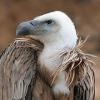
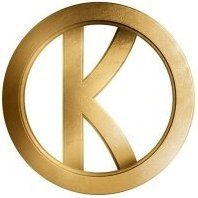
.thumb.jpg.d17ff607fc7e89ed057e63fcb6f2a888.jpg)
